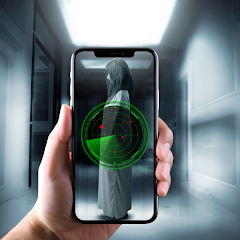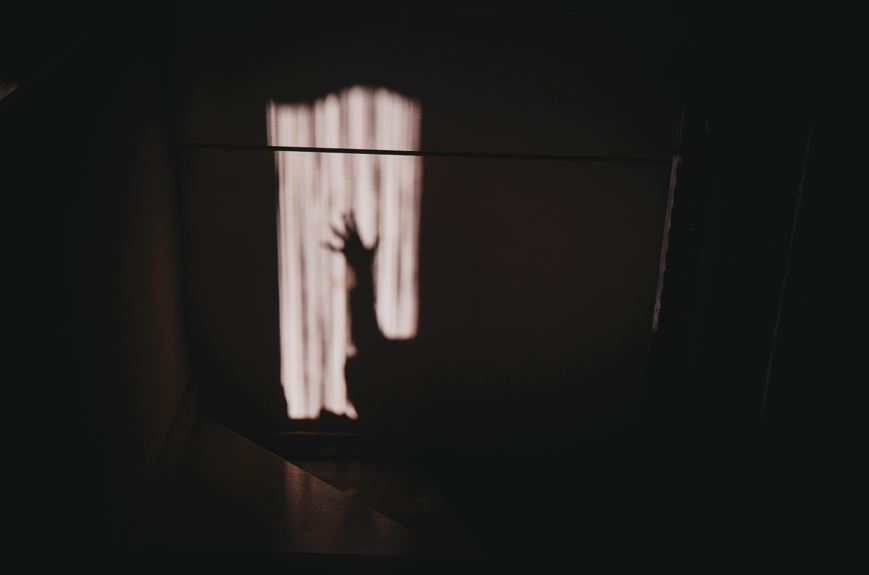Ghost Detector
About this app
The article delves into the realm of paranormal investigation and ghost monitoring, shedding light on the intricacies of ghost detector and ghost tracker applications. It examines their capabilities in distinguishing authentic from fabricated ghostly phenomena, while also evaluating the leading applications available, outlining their advantages, drawbacks, and safety protocols.
Additionally, the article contrasts unconventional approaches to ghost detection and tracking, furnishing an exhaustive portrayal of the domain of paranormal inquiry.
What are Ghost Detector and Ghost Tracker Apps?
Ghost Detector and Ghost Tracker apps are specialized mobile applications created to help users detect and track paranormal activity, assist in spirit communication, and enhance ghost hunting experiences.
These applications make use of various sensors found on smartphones, such as EMF detectors, EVP recording tools, and thermal cameras, to identify alterations in the environment that could indicate the presence of spirits. They often feature real-time communication tools for interacting with ghosts, historical information on reported hauntings, and mapping capabilities to identify locations where paranormal incidents have been recorded.
By equipping users with a variety of tools and data, these apps strive to introduce a scientific methodology to paranormal investigations and provide assistance to ghost hunters in their pursuit of supernatural exploration.
Features and Functions of Ghost Detector and Ghost Tracker Apps
The characteristics and capabilities of Ghost Detector and Ghost Tracker applications encompass a range of tools and technologies specifically crafted to identify spectral manifestations, deliver live tracking capabilities, and present a user-friendly interface to enhance usability and precision in detecting paranormal occurrences.
Common Features and How They Work
Ghost Detector and Ghost Tracker apps commonly offer features such as EMF readings, EVP recordings, and augmented reality functionalities. These features make use of sophisticated ghost detection technology and sensor data to identify and document paranormal occurrences.
EMF readings, which stand for electromagnetic field readings, play a vital role in ghost hunting activities. These readings are capable of detecting fluctuations in the electromagnetic field that are believed to manifest in the presence of spirits.
EVP recordings, known as electronic voice phenomena, capture voices or sounds that are inexplicable and inaudible to the human ear during the recording process. These recordings are often subject to analysis for potential ghostly communications.
Furthermore, the augmented reality capabilities of these apps enrich the user experience by superimposing ghostly figures or supplementary information onto the physical environment. This feature aids in the detection and interaction with spiritual entities during investigative processes.
Effectiveness of Ghost Detector and Ghost Tracker Apps
The efficacy of Ghost Detector and Ghost Tracker applications predominantly hinges on their performance, accuracy in detecting spectral evidence, and the overall user experience they afford during paranormal investigations.
Real vs. Fake Ghost Detection
Differentiating between authentic and counterfeit ghost detection is a crucial consideration for individuals who have a deep interest in the paranormal. This distinction plays a pivotal role in upholding the integrity and precision of the apparitions and evidence recorded through such applications.
One of the primary challenges in discerning genuine otherworldly occurrences from erroneous signals stems from the intricate nature of the supernatural domain. Even though technological advancements have made ghost detection applications widely available, the reliability of their outputs remains a subject of debate.
To confirm the legitimacy of the captured evidence, users ought to meticulously observe factors like the consistency of readings, the context in which phenomena manifest, and any supporting physical indications. Moreover, juxtaposing these findings with historical archives and conducting comprehensive investigations into the purportedly haunted sites can offer valuable insights into the credibility of the identified paranormal entities.
Top Ghost Detector and Ghost Tracker Apps on the Market
Multiple leading Ghost Detector and Ghost Tracker applications currently hold a dominant position in the market. They each provide distinctive features and have received high user ratings and favorable app reviews from the ghost tracker community.
Pros and Cons of Popular Apps
The analysis of prominent Ghost Detector and Ghost Tracker applications reveals a range of advantages and disadvantages influenced by factors such as application performance, user experience, design, interface, and the efficacy of paranormal activity detection.
In terms of performance, the Ghost Detector application demonstrates superior capabilities in delivering real-time tracking of ghostly phenomena with a high degree of accuracy. Users have commended its intuitive interface and user-friendly design, which facilitate ease of use, particularly for individuals new to such technology. However, feedback indicates that the application can exhibit rapid battery consumption during operation.
Conversely, the Ghost Tracker application distinguishes itself through its extensive repository of ghost sightings and historical data, offering users a comprehensive and immersive exploration experience. Notwithstanding these benefits, users have encountered intermittent technical glitches that compromise the application's reliability, thereby affecting user satisfaction levels.
Safety and Ethical Considerations for Using Ghost Detector and Ghost Tracker Apps
Utilizing Ghost Detector and Ghost Tracker applications necessitates a meticulous evaluation of safety and ethical considerations, encompassing privacy apprehensions, conscientious usage, application security, and the permissions solicited by the applications.
Privacy Concerns and Responsible Use
The deployment of Ghost Detector and Ghost Tracker apps necessitates a focus on privacy concerns and responsible use, requiring the implementation of stringent app security measures and careful consideration of requested app permissions.
Users should exercise caution when utilizing these apps, given that they often necessitate access to personal data and device functions. Numerous users have expressed apprehension regarding potential privacy breaches and data leaks associated with such applications. To ensure a secure user experience, it is recommended that individuals thoroughly review app permissions before granting them. It is crucial to enable only essential permissions and regularly review settings to revoke any unnecessary access.
Furthermore, users are advised to stay informed about app updates that may introduce enhanced security features to safeguard their data. Through the practice of vigilance and responsible app usage, individuals can effectively mitigate privacy risks and enjoy the intended features of these apps without compromising their personal information.
Alternative Methods of Ghost Detection and Tracking
Various alternative methods for detecting and tracking ghosts, including traditional ghost hunting equipment, advanced paranormal technology, and techniques utilized in historical hauntings, provide a range of approaches for conducting paranormal investigations.
Comparing Other Paranormal Investigation Techniques
In comparison to other paranormal investigation techniques, such as the utilization of ghost hunting equipment and EVP analysis, evaluating app-based methods provides a comprehensive insight into the tools and technologies accessible to paranormal researchers.
Ghost hunting equipment, such as EMF meters and infrared cameras, present tangible opportunities for data collection during investigations. These devices have the capability to capture anomalies that may not be readily perceptible to the investigator's senses. However, they can be cumbersome to operate and necessitate specific expertise.
Conversely, EVP analysis entails reviewing audio recordings to detect potential spirit communication, though it is inherently subjective and susceptible to varying interpretations.
Contrary to traditional tools, ghost detector and tracker apps claim to provide real-time monitoring of paranormal activity through diverse sensors on mobile devices. While their convenience and accessibility are indisputable, skeptics contend that their outcomes may be influenced by environmental conditions or random data fluctuations.
By juxtaposing these methodologies, paranormal researchers can evaluate the strengths and weaknesses of each approach in order to enrich their investigative processes.
Related Apps
-
Steam MobileGETEntertainment
-
Singing Machine KaraokeGETEntertainment
-
EventbriteGETEntertainment
-
Live ChannelsGETEntertainment



















